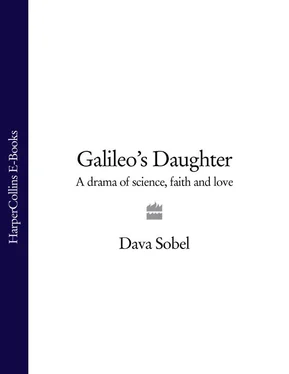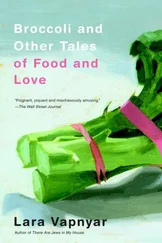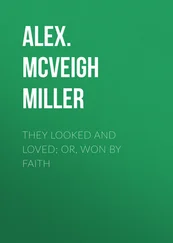The new-found worlds transformed Galileo’s life. He won appointment as chief mathematician and philosopher to the grand duke in 1610, and moved to Florence to assume his position at the court of Cosimo de’ Medici. He took along with him his two daughters, then ten and nine years old, but he left Vincenzio, who was only four when greatness descended on the family, to live a while longer in Padua with Marina.
Galileo found himself lionised as another Columbus for his conquests. Even as he attained the height of his glory, however, he attracted enmity and suspicion. For instead of opening a distant land dominated by heathens, Galileo trespassed on holy ground. Hardly had his first spate of findings stunned the populace of Europe before a new wave followed: he saw dark spots creeping continuously across the face of the Sun, and ‘the mother of loves’, as he called the planet Venus, cycling through phases from full to crescent, just as the Moon did.
All his observations lent credence to the unpopular Sun-centred universe of Nicolaus Copernicus, which had been introduced over half a century previously but foundered on lack of evidence. Galileo’s efforts provided the beginning of a proof. And his flamboyant style of promulgating his ideas – sometimes in bawdy humorous writings, sometimes loudly at dinner parties and staged debates – transported the new astronomy from the Latin Quarters of the universities into the public arena. In 1616, a pope and a cardinal inquisitor reprimanded Galileo, warning him to curtail his forays into the supernal realms. The motions of the heavenly bodies, they said, having been touched upon in the Psalms, the Book of Joshua, and elsewhere in the Bible, were matters best left to the Holy Fathers of the Church.
Galileo obeyed their orders, silencing himself on the subject. For seven cautious years he turned his efforts to less perilous pursuits, such as harnessing his Jovian satellites in the service of navigation, to help sailors discover their longitude at sea. He studied poetry and wrote literary criticism. Modifying his telescope, he developed a compound microscope. ‘I have observed many tiny animals with great admiration,’ he reported, ‘among which the flea is quite horrible, the gnat and the moth very beautiful; and with great satisfaction I have seen how flies and other little animals can walk attached to mirrors, upside down.’
Shortly after his sister’s death in May of 1623, however, Galileo found reason to return to the Sun-centred universe like a moth to a flame. That summer a new pope ascended the throne of Saint Peter in Rome. The Supreme Pontiff Urban VIII brought to the Holy See an intellectualism and an interest in scientific investigation not shared by his immediate predecessors. Galileo knew the man personally – he had demonstrated his telescope to him and the two had taken the same side one night in a debate about floating bodies after a banquet at the Florentine court. Urban, for his part, had admired Galileo so long and well that he had even written a poem for him, mentioning the sights revealed by ‘Galileo’s glass’.
The presence of the poet pope encouraged Galileo to proceed with a long-planned popular dissertation on the two rival theories of cosmology: the Sun-centred and the Earth-centred, or, in his words, the ‘two chief systems of the world’.
It might have been difficult for Suor Maria Celeste to condone this course – to reconcile her role as a bride of Christ with her father’s position as potentially the greatest enemy of the Catholic Church since Martin Luther. But instead she approved of his endeavours because she knew the depth of his faith. She accepted Galileo’s conviction that God had dictated the Holy Scriptures to guide men’s spirits but proffered the unravelling of the universe as a challenge to their intelligence. Understanding her father’s prodigious capacity in this pursuit, she prayed for his health, for his longevity, for the fulfilment of his ‘every just desire’. As the convent’s apothecary, she concocted elixirs and pills to strengthen him for his studies and protect him from epidemic diseases. Her letters, animated by her belief in Galileo’s innocence of any heretical depravity, carried him through the ordeal of his ultimate confrontation with Urban and the Inquisition in 1633.
No detectable strife ever disturbed the affectionate relationship between Galileo and his daughter. Theirs is not a tale of abuse or rejection or intentional stifling of abilities. Rather, it is a love story, a tragedy and a mystery.
Most of Suor Maria Celeste’s letters travelled in the pocket of a messenger, or in a basket laden with laundry, sweetmeats or herbal medicines, across the short distance from the Convent of San Matteo, on a hillside just south of Florence, to Galileo in the city or at his suburban home. Following the angry papal summons to Rome in 1632, however, the letters rode on horseback some two hundred miles and were frequently delayed by quarantines imposed as the Black Plague spread death and dread across Italy. Gaps of months’ duration disrupt the continuity of the reportage in places, but every page is redolent of daily life, down to the pain of toothache and the smell of vinegar.
Galileo held on to his daughter’s missives indiscriminately, collecting her requests for fruits or sewing supplies alongside her outbursts on ecclesiastical politics. Similarly, Suor Maria Celeste saved all of Galileo’s letters, as rereading them, she often reminded him, gave her great pleasure. By the time she received the last rites, the letters she had gathered over her lifetime in the convent constituted the bulk of her earthly possessions. But then the mother abbess, who would have discovered Galileo’s letters while emptying Suor Maria Celeste’s cell, apparently buried or burned them out of fear. After the celebrated trial at Rome, a convent dared not harbour the writings of a ‘vehemently suspected’ heretic. In this fashion, the correspondence between father and daughter was long ago reduced to a monologue.
Standing in now for all the thoughts he once expressed to her are only those he chanced to offer others about her. ‘A woman of exquisite mind,’ Galileo described her to a colleague in another country, ‘singular goodness, and most tenderly attached to me.’
On first learning of Suor Maria Celeste’s letters, people generally assume that Galileo’s replies must lie concealed somewhere in the recesses of the Vatican Library, and that if only an enterprising outsider could gain access, the missing half of the dialogue would be found. But, alas, the archives have been combed, several times, by religious authorities and authorised researchers all desperate to hear the paternal tone of Galileo’s voice. These seekers have come to accept the account of the mother abbess’s destruction of the documents as the most reasonable explanation for their disappearance. The historical importance of any paper signed by Galileo, not to mention the prices such articles have commanded for the past two centuries, leaves few conceivable places where whole packets of his letters could hide.
Although numerous commentaries, plays, poems, early lectures and manuscripts of Galileo’s have also disappeared (known only by specific mentions in more than two thousand preserved letters from his contemporary correspondents), his enormous legacy includes his five most important books, two of his original handmade telescopes, various portraits and busts he sat for during his lifetime, even parts of his body preserved after death. (The middle finger of his right hand can be seen, encased in a gilded glass egg atop an inscribed marble pedestal at the Museum of the History of Science in Florence.)
Of Suor Maria Celeste, however, only her letters remain. Bound into a single volume with cardboard and leather covers, the frayed, deckle-edged pages now reside among the rare manuscripts at Florence’s National Central Library. The handwriting throughout is still legible, though the once-black ink has turned brown. Some letters bear annotations in Galileo’s own hand, for he occasionally jotted notes in the margins about the things she said and at other times made seemingly unrelated calculations or geometric diagrams in the blank spaces around his address on the verso. Several of the sheets are marred by tiny holes, torn, darkened by acid or mildew, smeared with spilled oil. Of those that are water-blurred, some obviously ventured through the rain, while others look more likely tear-stained, either during the writing or the reading of them. After nearly four hundred years, the red sealing wax still sticks to the folded corners of the paper.
Читать дальше












